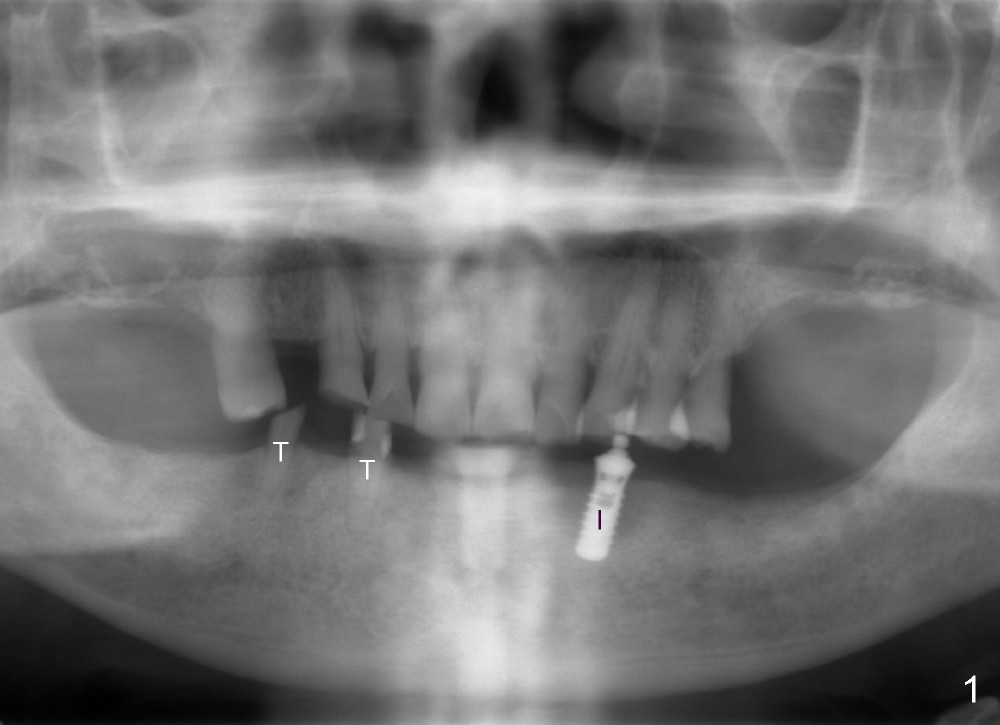
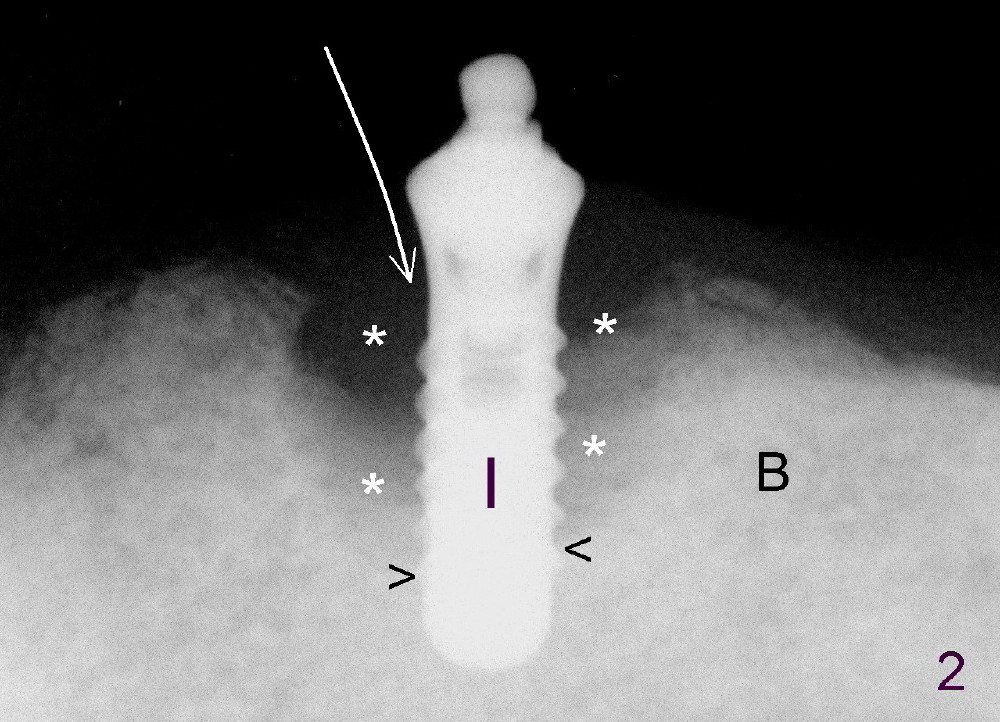
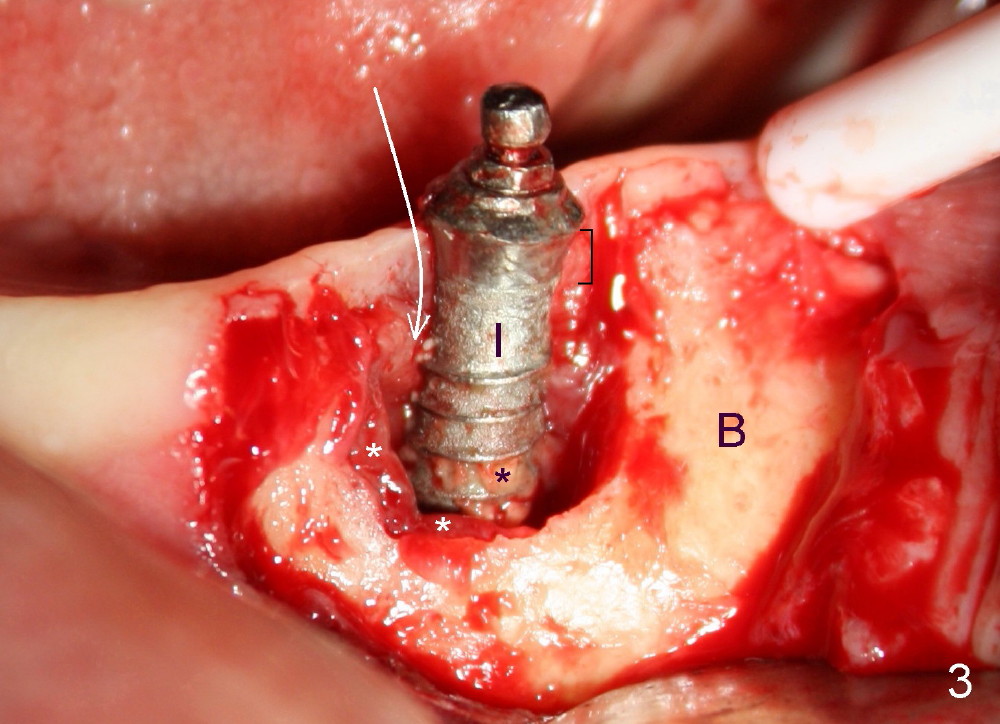
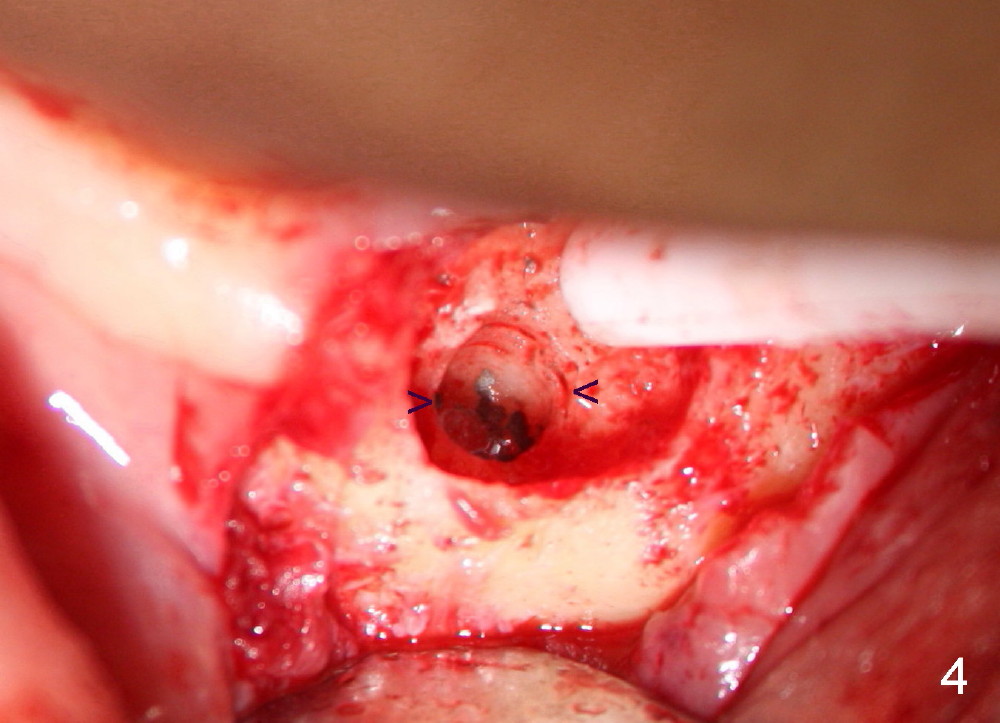
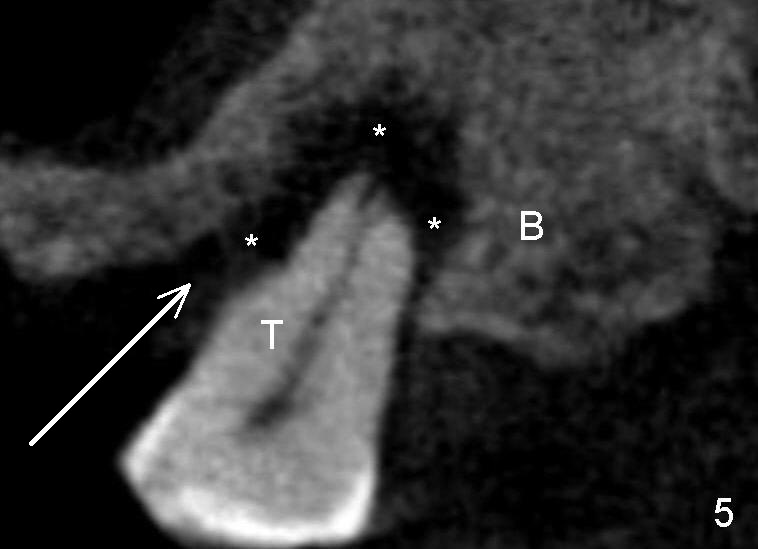
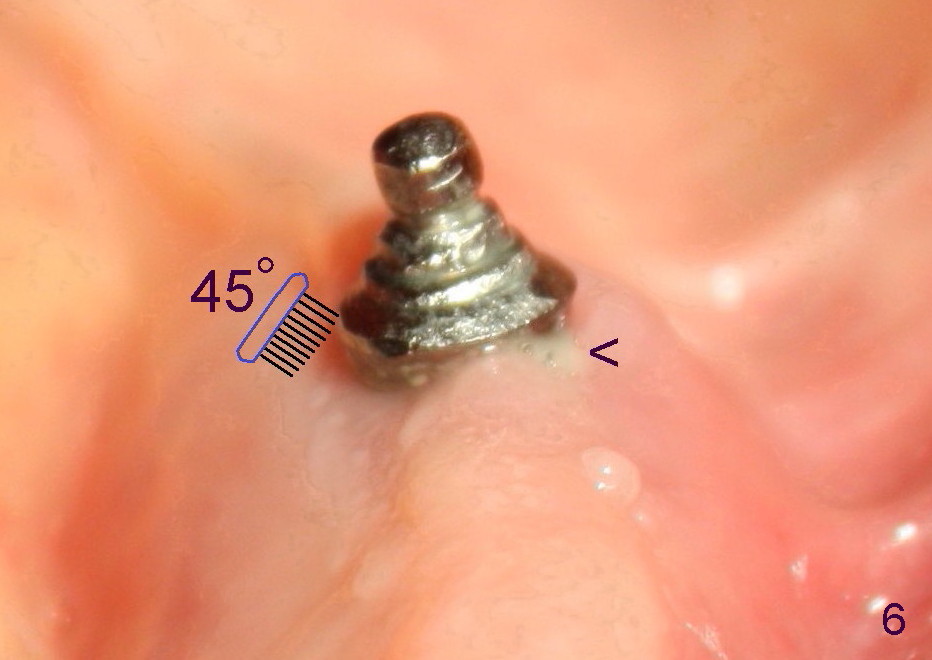
 |
 |
 |
 |
 |
 |
Periimplantitis vs. Periodontitis
Periimplantitis (infection around implant) and periodontitis (infection around tooth) share something in common. They are bacterial infection due to inefficient oral hygiene, leading to eventual loss of implant/tooth.
Mr. Wang is 84 years old with history of diabetes. An implant (Fig.1: I) was placed several years ago to support a lower partial denture with two natural teeth (T). The implant has had infection for about a year with pus coming out between the implant and gums (Fig.6 <). X-ray shows that there is severe bone loss around the implant (Fig.2 *), although the bone (B) remains in contact with the implant in the bottom (below <). Since the infection causes pain, the senior patient agrees to have the implant removed.
Upon gum tissue being open, the severe bone loss around the top portion of the implant is confirmed (Fig.3) . The surface of the implant is not clean. Infection tissue is hanging around (*). When the implant is removed, the large bone defect is visible (Fig.4). The smaller space (indicated by Fig. 4 <) was occupied by the bottom part of the implant as shown in Fig.2.
Fig.5 shows a large bone defect (*) around an upper tooth (T). This tooth is also one of a few teeth to supports a partial denture. What is the medical term to describe this condition?
Periodontitis. Let us use these photos to explain briefly how to prevent periimplantitis and periodontitis.
First, infection around implant or tooth is due to introduction of bacteria into the space next to implant or tooth (arrow in Fig.2,3,5). The top of the implant is smooth (Fig.3: ] ), the rest is rough. The rough surface is designed for the bone to stick into the implant. Once the bacteria reach the rough surface of the implant, they are stuck, difficult to be removed. Therefore, when the implant is placed, great attention should be paid to brushing the smooth sticking out portion of the implant at 45 degree as shown in Fig.6. Keep doing it on a consistent basis to prevent bacteria from going deep.
Second, Mr. Wang is very muscular. One implant on one side of the lower jaw should be too few against several teeth on the top (Fig.1). In the same way, one tooth to support several missing teeth in Fig.5 is not enough. Both patients should have had more implants to support the partial dentures to increase the longevity of the supporting implants and or teeth.
Xin Wei, DDS, PhD, MS 1st edition 08/09/2012, last revision 09/28/2012